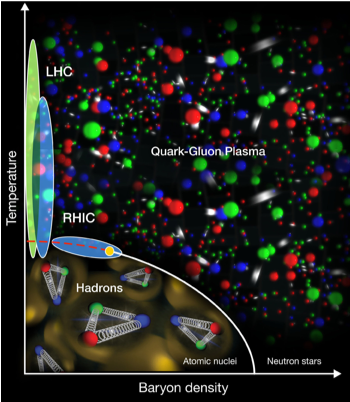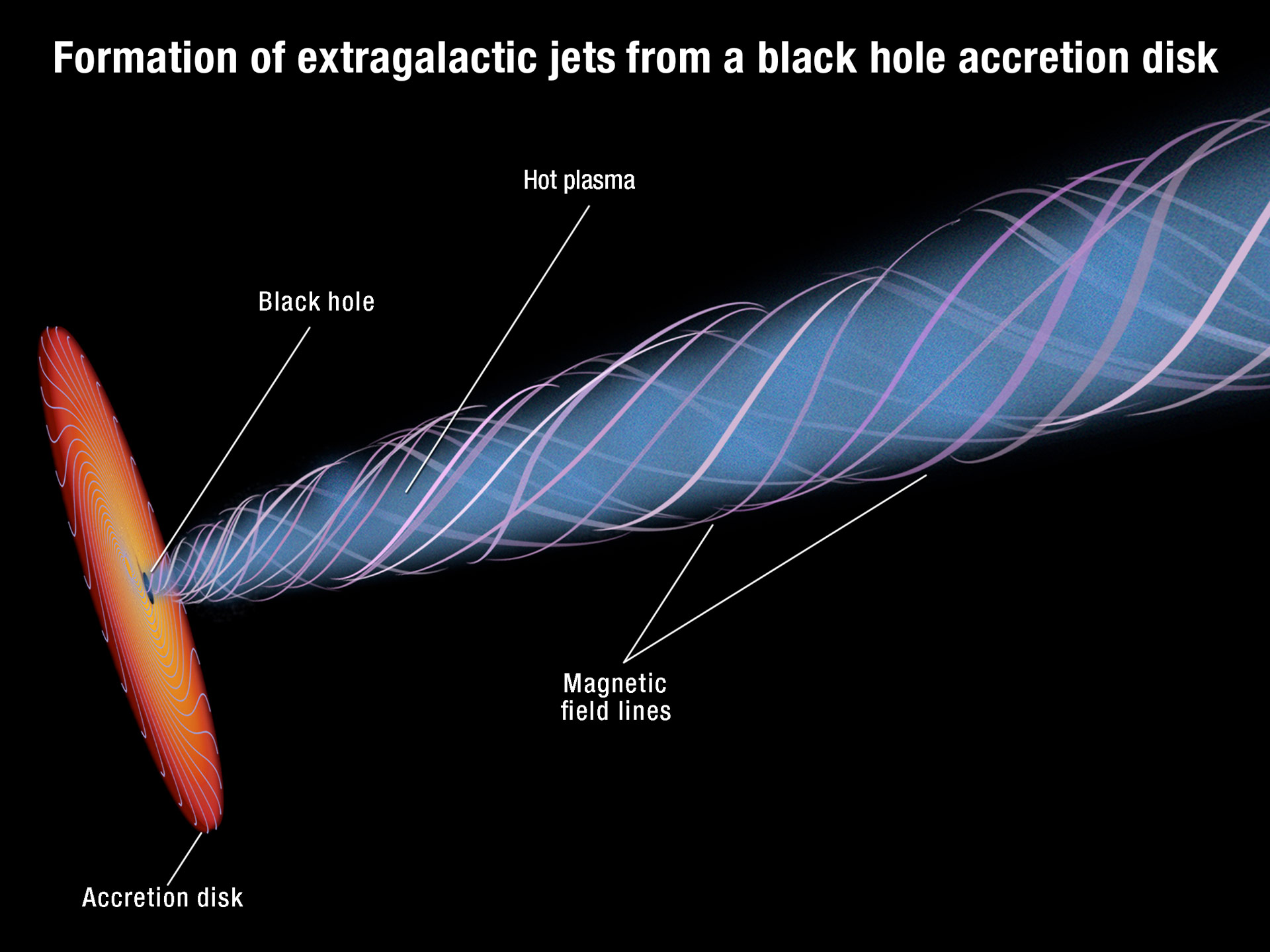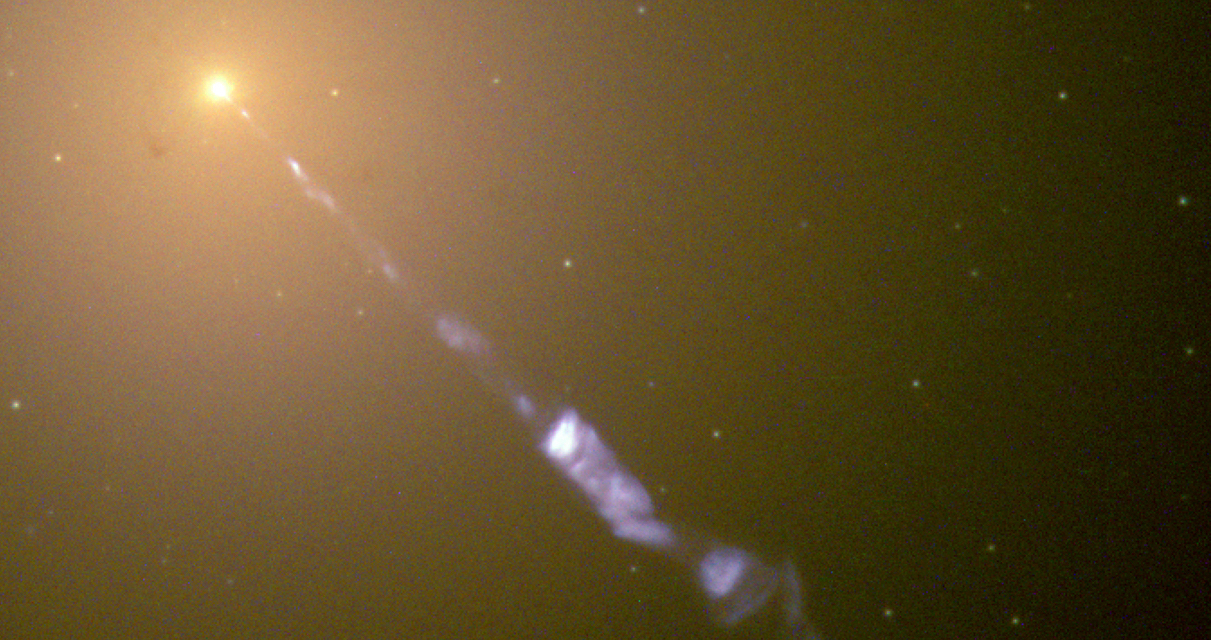Quarks, Gluons, Jets & Black Holes
Discussing black hole jets
Let’s start with the basics, as you probably know by now you have skin all over your body ( I really hope you know this, but in case you don’t… now you do ). Say we grab a piece of skin and look under a microscope, we would then be able to see the tissue that makes up your skin, if we were to break down the tissue we would eventually get to molecules. If we then grabbed the molecules making up your tissue and broke those down we would get to the atom. As we know, atoms are made up of protons and neutrons in its nucleus (center) and electrons which orbit that nucleus.
Physicist have classified particles as falling under three different classifications. (1) Leptons, (2) Muons, & (3) Taus, listed in order of increasing mass. From these three we know leptons to include 3 kinds of neutrinos & electrons. Neutrinos play their roles, but I will not talk much about them here since their neutral nature does not let them interact with much. In fact, trillions of neutrinos pass through you from the sun every second and you are still intact.
As of right now, particle physicists have not been able to break down electrons, but the same is not true for protons. Scientists have made use of massive particle colliders to speed up protons to nearly the speed of light (0.999946 times the speed of light) and crash them against each other to break them into pieces. These pieces are what we call quarks. There are actually multiple types of quarks as well, there are: up, down, charm, strange, bottom and up quarks (In case you were wondering, protons and neutrons are made up of up and down quarks). Many theoretical physicist agree in that quarks are most likely made up of strings (where The String Theory comes from - I wont discuss it here, maybe another time), but these have not yet been experimentally found. Because we have not yet been able to break down quarks, we refer to them as fundamental particles.
I mentioned before that there are six categories for quarks, that even number is not a coincidence, quarks are never found on their own, they are always in pairs, top and bottom, up and down, and strange and charm. Groups of quarks are called hadrons (Check Figure 1), which are held together by a force called a gluon. You can think of the force pulling these hadrons together as a string, the more you pull the quarks apart the tenser the string grows. If you pull on the quarks and let go of them, the tension on the string quickly pulls them back together, however if you put in enough energy, you could pull the quarks until that string breaks at which point it is more effective to use that energy to create new quarks than it is to pull the old quark partners together. These new quarks quickly create new hadrons which are ejected in a stream that we call a jet. There you have it! We have now touched every word on the title of this post… well except the black hole but we will get to it.
 Figure 1: Phase diagram of QCD matter. Diagram shows quarks gluons and their respective sate as a function of temperature and baryon density. In green (LHC) is the range covered by the Large Hadron Collider. Credit: BNL/RHIC.
Figure 1: Phase diagram of QCD matter. Diagram shows quarks gluons and their respective sate as a function of temperature and baryon density. In green (LHC) is the range covered by the Large Hadron Collider. Credit: BNL/RHIC.
Here on Earth we can create these jets, in hadron colliders, where scientists speed up protons quickly enough to make their impact amount to enough energy to create another 8000 protons (I’ve included a Technical Section in case you want to get to the nitty gritty of how this works, you can find it at the end of the post, you can jump there now if you wish). The collision generated enough energy to break apart the hadrons and create jets in the way we mentioned before. The question then becomes can this same concept be extrapolated to the jets we see coming from black holes?
I’m not quite sure if this is a theory yet, but this is what makes sense to me when I read about particle physics and keep black holes in mind, let me know what you think or if I am totally wrong in the comments section below.
We know black holes have enough mass to pull in anything, including light itself. Check out our previous post on black holes for a better break down. This strong gravitational pull means that even hadrons will be pulled in by the black hole as they enter the event horizon. As we know from our previous blog post discussion, as things approach the singularity of a black hole they gain higher velocities, meaning that in the case of a hadron, the quarks closer to the center of the black hole will be pulled at a greater velocity than those on the outer side.
 Figure 2: Black hole components of jet formed by accretion disk. Credit: NASA, ESA, and A. Feild (STScI).
Figure 2: Black hole components of jet formed by accretion disk. Credit: NASA, ESA, and A. Feild (STScI).
This difference in velocity will tear the quarks apart with enough energy to then create a snap in the string (gluon) we talked about before. As this happens, some jets are created in the direction opposite to the black hole, making it look as if the black hole was ejecting matter. On Figure 2 you can see the different parts of the black hole, and the hot plasma in the middle of the jet, could be composed of this gluon-quark plasma.
What do you think? I will definitely continue to read more about this and update this post or maybe create another as I see fit. Keep an eye out, this is going to be a hot topic on the blog for the next month or so.
Technical Section:
Einstein’s energy equation is VERY famous as: E = mc2 but did you know that in reality there is one missing variable in there? Einstein’s Theory of Relativity actually considers the speed of a particle as a variable defined as gamma (γ). Meaning the equation actually looks something more like: E = γmc2. Gamma is essentially defined as γ2 = 1/(1-v2/c2), where vs is the speed of the particle and c is the speed of light. You can see that as v gets closer to the speed of light c, γ approaches 1/0 which is infinite. In the case that v is very small, almost 0, then γ = 1 and the famous equation emerges as E = mc2
In a particle accelerator like the LHC, the speed of the particle approaches the speed of light, which means gamma cannot be overlooked. This means that with a large enough value of γ we can create enough Energy to produce more of the particle in the event of a collision. Consider that a proton in the LHC is travelling with an energy of 4000 GeV, meaning its kinetic energy is more than 400 times bigger than its rest mass energy. If you collide that proton with another being spun up in the opposite direction, you have a net energy of 8000GeV, which essentially means you can make about 8000 protons with the energy put into the particle’s speed; that’s where my number above comes from.
References:
“Most Wanted Particle” by Jon Butterworth
Background picture curtesy of SFN and the Event Horizon Telescope team.



Comments